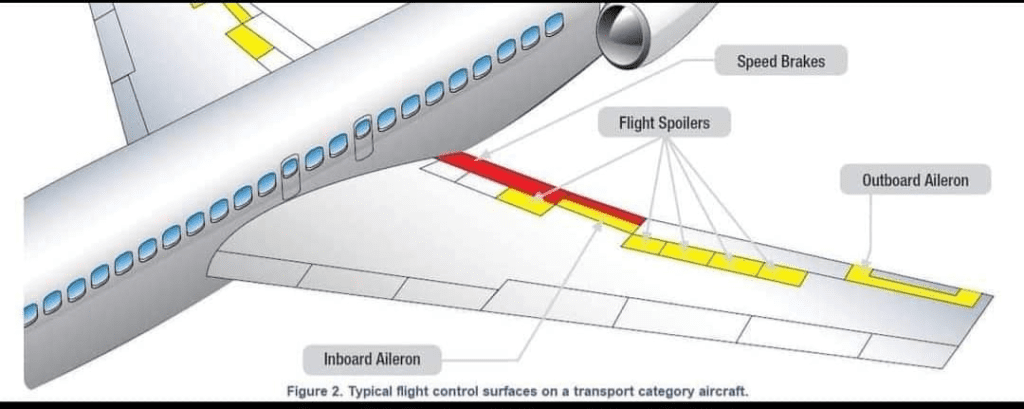
Ailerons are the primary flight control surfaces that move the aircraft about the longitudinal axis.
In other words, the movement of the ailerons in flight causes the aircraft to roll.
Ailerons are usually located on the outboard trailing edge of each of the wings.
They are built into the wing and are calculated as part of the wing’s surface area.
Ailerons are controlled by a side to side motion of the control stick in the cockpit or a rotation of the control yoke.

When the aileron on one wing deflects down, the aileron on the opposite wing deflects upward.
This amplifies the movement of the aircraft around the longitudinal axis.
On the wing on which the aileron trailing edge moves downward, camber is increased and lift is increased. Conversely, on the other wing, the raised aileron decreases lift.
(Figure 1) The result is a sensitive response to the control input to roll the aircraft.
The pilot’s request for aileron movement and roll is transmitted from the cockpit to the actual control surface in a variety of ways depending on the aircraft.
A system of control cables and pulleys, push-pull tubes, hydraulics, electric, or a combination of these can be employed.
light aircraft usually do not have hydraulic or electric fly by wire aileron control.
These are found on heavy and high-performance aircraft. Large aircraft and some high-performance aircraft may also have a second set of ailerons located inboard on the trailing edge of the wings.
These are part of a complex system of primary and secondary control surfaces used to provide lateral control and stability in flight.
At low speeds, the ailerons may be augmented by the use of flaps and spoilers.
At high speeds, only inboard aileron deflection is required to roll the aircraft while the other control surfaces are locked out or remain stationary.
(Figure 2) illustrates the location of the typical flight control surfaces found on a transport category aircraft.
Author – Vander Stone





